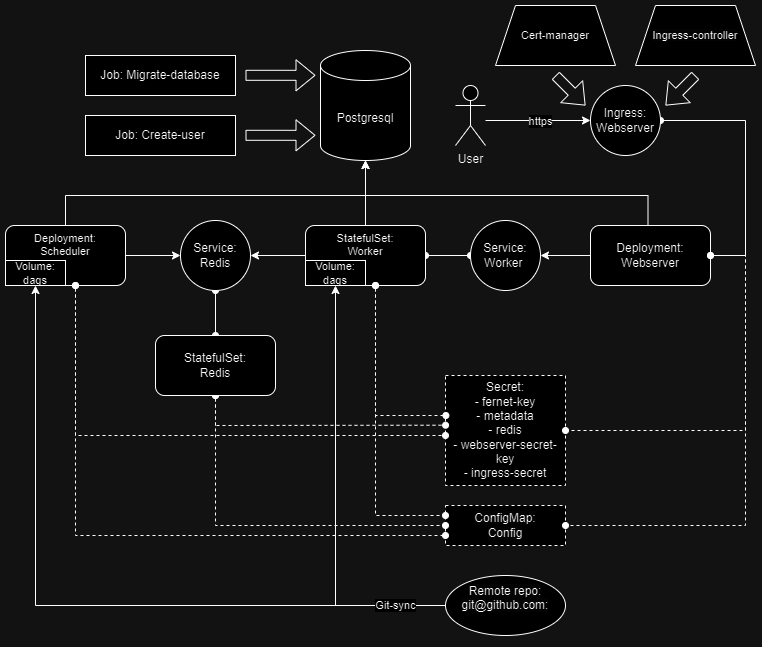How SpaceX is taking over space

The past 2023 has been a successful year for SpaceX, which was founded by Elon Musk more than 20 years ago. Under his leadership, the company's employees were able to launch a record number of rockets with payloads into orbit. But why exactly was SpaceX able to get ahead and how are their competitors doing? Let's try to find answers to these questions in the article.
Results for last year
In 2023, SpaceX dominated the number of space launches in the world. It was able to launch 96 launch vehicles during the year out of 200 worldwide, accounting for almost half of all launches. SpaceX has delivered about 1,200 tons of payload into Earth orbit. NASA and the US Department of Defense are the largest users of SpaceX, so its success has a positive impact on the development of government organizations. And revenues from NASA, in turn, stimulate SpaceX's developments.
SpaceX offers to deliver large volumes and a variety of space cargo at a lower cost and at high speed. The government, by investing financially in several large market players, stimulates their development of space technologies. As these companies grow, the volume of their services also increases, lead times decrease, and possible risks are minimized.
Elon Musk never consciously sought to imitate other participants in the “space race.” This is especially evident in development, for which SpaceX specialists use trial and error in a real environment. They also use experiential learning in laboratory settings to test hypotheses and analyze the results. These approaches differ from those traditional in the space industry, which involve theoretical studies, computer simulations, and careful planning based on established engineering and scientific principles before actual construction and launch.
Musk explains that speed is important to his businesses because missing deadlines is very costly financially and the company misses out on “more than a billion dollars a month in benefits.”
Perhaps the most striking illustration of this approach:
Back in the early 2000s, NASA became disillusioned with the effectiveness of its own projects, which gave impetus to the development of a new strategy – distributing the economic risk of investments between it and contractors.
A. Ansar and B. Flyvbjerg in their article for the Oxford Review of Economic Policy in 2022, they provide a comparative analysis of the performance of SpaceX and NASA.
They identify four performance indicators. Let's take a closer look at them.
Price
In this case, these are absolute costs. For example, the cost of a payload or delivering one kilogram of cargo to low Earth orbit. SpaceX's prices for delivering cargo on the Falcon Heavy are cheaper than those of competitors and NASA rockets. But there is a nuance – the company surpasses competitors in development costs.
Cost overrun
Reflects actual costs. The baseline for NASA is the available cost estimate, and for SpaceX it is the estimated contract cost, the bid amount. But SpaceX, a private company, doesn't publish cash flow reports, so we can't know exactly how annual expenses are divided among missions. It is possible that the company underestimates internal bid prices in order to obtain contracts whose estimates correspond to market expectations.
SpaceX's absolute costs are 10 times lower than NASA's, and cost overruns are 80 times lower. Additionally, based on publicly available data on funding sources and revenues, we can conclude that SpaceX cannot significantly underprice its contracts and remain solvent. This allows us to compare financial indicators and conclude that NASA’s cost overruns are many times higher and occur more often in projects.
Speed to market
Measured as the actual delivery time from the start of the investment to the first successful launch without any pre-planning phase. For SpaceX it averages about 4 years, and this time period is constantly decreasing, and for NASA it is about 7 years.
Scalability
Expressed in number of launches per year. This is the ability to cope with increased workloads without failures or attracting additional resources. So SpaceX aims to develop rocket reuse technology and ultimately reduce the cost of flights and stimulate the development of the commercial sector in the industry.
The company adheres to the principle of adaptability. In her inventions, she adds new ones to the existing capabilities of earlier versions. For example, the Falcon Heavy carrier is an advanced model of the Falcon 9 for transporting heavy cargo.
Successes of Falcon 9 and Falcon Heavy
In March 2006, the first Falcon 1 launch took place, just 4 years after SpaceX was founded. After its fifth launch in July 2009, when the rocket delivered only one small Earth observation satellite, it had to be retired.
The company built the first engine for the Merlin rocket in 3 years; previously it took at least 7 years. Next, SpaceX expanded its line of rocket engines to three – Merlin, Kestrel and Raptor. Each of them received their own updates. For example, the Merlin family includes 1A, 1B, 1C, 1C Vacuum, 1D, 1D Vacuum.
Cost reduction with Falcon 9
By November 2008, the next generation Falcon 9 rocket passed its first tests. In 2013 it was updated to Falcon 9 v1.1, in 2015 to Falcon 9 Full Thrust, and in 2018 to Falcon 9 Block 5.
The reliability and repeatability of Falcon 9 rocket launches has led to cost reductions and lower prices for cargo delivery services. Demand has increased from owners of small satellites.

SpaceX has also begun to use the concept of “fellow travelers” in its missions. It involves the simultaneous delivery of various cargo into orbit, which allows for the most efficient use of the rocket's carrying capacity and reduces launch costs. In total, Falcon 9 has a payload capacity of more than 22.8 tons to low Earth orbit.
In January 2024, a Falcon 9 rocket successfully launched the Crew Dragon spacecraft with a commercial crew of astronauts on board to the ISS.
Falcon Heavy Breakthrough
Another Falcon Heavy carrier is designed to transport heavy loads into space. It was first launched at the beginning of 2018. During a test flight Elon Musk sent into space one of the Tesla Roadster electric vehicles with an astronaut dummy inside to show that the rocket can carry a payload to Mars.
Falcon Heavy lifts 64 tons into Earth orbit. Its predecessor, the Delta IV Heavy, produced by United Launch Alliance (ULA), could deliver 28 tons.

The Falcon Heavy rocket so far outpaces its competitors with a development cost of less than $1 billion, while NASA's current heavy rocket, the Space Launch System (SLS), cost the government more than 22 times that amount.
The cost of Falcon Heavy is from 90 to 150 million dollars. SpaceX believes it can deliver any Department of Defense satellites into outer space at the lowest cost. Previously, only the Delta IV Heavy had this capability, but its cost was several times higher than that of the Falcon Heavy.
Starship failures
Development of the Starship rocket system began in 2010. Its mission: assistance in the development of new territories of the Moon and Mars. Starship Super Heavy is the largest and most lifting system ever built. It weighs 5,000 tons and is 120 meters high.
Starship Super Heavy includes two stages:
Super Heavy rocket as the first stage. It can deliver a cargo of up to 150 tons and return back to Earth, because it is designed for 100 or more launches. 33 Raptor engines powered by methane help take off.
Starship spacecraft as a second stage. It can be refueled in orbit and then controlled the flight to Mars and the Moon. It is equipped with six Raptor engines.
What's wrong with the system?
Testing of Starship began at the end of 2018. These included creating prototypes to eliminate possible problems and adjust models. In the spring of 2021, the first successful takeoff followed by landing took place.

Later that summer, SpaceX began testing the hypothesis that all 33 Super Heavy engines could be used simultaneously. Testing was interrupted due to the shutdown of four motors. The next test, carried out the same month, was successful. It showed that the system is able to lift off from the Earth and lift the ship to the stage detachment point.
First start systems were carried out in the spring of 2023. The rocket rose, but managed to cover only 39 kilometers, after which it began to “tumble.” The signal for remote detonation did not go through immediately, but was delayed for 90 seconds. The reason for the signal break with the computer on board the ship is a methane leak from the rocket. After this launch, the undocking and gas exhaust system was modernized.
Second bad start SpaceX produced in November 2023. The first stage separated from the ship, but failed to return to Earth. To return, it was necessary to start the engines, which were turned off when the parts were separated. The remaining oxygen released from the fuel tanks caused a fire in the engine area, which led to the activation of the destruction system. The spacecraft flew 148 kilometers using its own engines, but was destroyed by the auto-flight abort system. Before this, his engines failed, and SpaceX specialists could not contact him.
Despite all the failures, the rocket system passed the main stages in the second test: launch and takeoff, passing the point of greatest load and separating the stages.
Elon Musk believes that the cause of the explosion was the release of liquid oxygen, which remained due to the lack of payload. That is, the problem would not arise during an actual cargo delivery mission, because in this case all the oxygen would be used up.
In February 2024, SpaceX plans to conduct the third launch of the rocket system. The company has not yet confirmed its plans to modernize it, but experts in the space industry are already putting forward their guesses: improving the engines and increasing their number, implementing the process of pumping fuel between the bow and the main fuel tank, increasing the volume of these tanks, placing the payload.
What do the competitors have there?
The United States is home to the largest number of space organizations, but other countries are closing the gap in other ways.
In the current year 2024, it can be assumed that China, Japan and India will also come to the forefront. Specialists from different countries are developing their own oxygen-methane engines. This fuel has low toxicity and is affordable, so it is more suitable than others for reusable flights.
LandSpace (China)
LandSpace Company plans launch reusable launch vehicles by 2025. For this they want to use the Zhuque-2 rocket. It was she who was the first to reach orbit in the summer of 2023 using liquid methane fuel, ahead of SpaceX. Already in December, the company began delivering satellites, completing several successful launches in a row.

The height of the medium-heavy rocket is 49.5 meters, and the diameter is slightly more than 3 meters. It lifts up to 6 tons of payload. The company continues to work to increase carrying capacity. The first stage includes four TQ-12 open cycle engines, the second also has a TQ-12 along with a TQ-11, which is needed to set the direction and speed of flight.
JAXA (Japan)
JAXA also is engaged development of a rocket using methane as fuel. Its launch is planned to take place no earlier than in 6 years. The heavy liquid-fueled H3 rocket is 63 meters high and 5.2 meters in diameter. The total carrying capacity is from 4 to 6.5 tons.

In March 2023 she failed during its first flight due to a malfunction in the second stage engine. The missile was destroyed by the flight abort system. The relaunch was scheduled for February 17, 2024 from Japan’s largest cosmodrome, Tanegashima, and was completed successfully. The rocket delivered a dummy payload and a secondary load in the form of two satellites into orbit.
H3 will launch the Martian Moons Exploration (MMX) automated interplanetary station, after which it will sample soil from Phobos, one of the moons of Mars, and send the return module with the sample to Earth.
ISRO (India)
Indian space agency ISRO is working on developing a new generation rocket, the Next Generation Launch Vehicle (NGLV), which will have three stages. The first stage of the rocket is intended to be reusable. The NGLV project aims to increase payload capacity and launch efficiency. The planned payload capacity is more than 9 tons for low Earth orbit and more than 5 tons for geostationary transfer orbit. The first launch is expected no earlier than 2030.
Roscosmos (Russia)
From 2018 to the present, Roscosmos has completed 110 successful rocket launches contract. The company is now developing its reusable Soyuz-LNG launch vehicle, the project of which should be completed in 2024, and the first flight will take place in 2025. The rocket will be launched from the Vostochny cosmodrome. It will run on the RD-0169A engine using methane, and the first stage will return for repeated flights.
NASA (USA)
Since 2011, NASA has been working on the construction of the super-heavy rocket Space Launch System (SLS).

SLS is designed for deep space exploration, including missions to the Moon and Mars. The first version of the rocket, Block 1, is capable of sending more than 27 tons beyond low-Earth orbit. Subsequent versions such as Block 1B and Block 2 are expected to increase payload capacity to 38 and 46 tons respectively for longer-range missions.
At the end of 2023, fire tests were carried out on the RS-25 engine, which uses liquid oxygen and hydrogen as fuel. These engines, four of which are installed on the first stage of the SLS rocket, are an upgraded version of the Space Shuttle engines and are intended for use as part of the Artemis program for flights to the Moon.
The first SLS launch, Artemis I, took place in November 2022, when the rocket sent an uninhabited Orion spacecraft into orbit. This was a significant step in NASA's program to return man to the Moon and further space exploration. The SLS is planned to be used for crew and cargo missions as part of the Artemis program in subsequent years.
United Launch Alliance (USA)
The company made just three rocket launches in 2023, but by the end of 2025, ULA plans to conduct at least 24 flights per year.
Over the next few years, the firm will carry out 11 launches to ensure US national security. SpaceX was assigned a little less – 10 launches.

Experts designed their two-stage heavy rocket Vulcan Centaur using BE-4 liquid-propellant engines from Blue Origin. ULA abandoned the Russian RD-180 engines, which were previously installed in Atlas 5 carriers.
The first stage of the Vulcan Centaur is equipped with a pair of BE-4 methane power units, the second pair is solid fuel. Centaur upper stages run on liquid oxygen and hydrogen. The height of the rocket reaches almost 62 meters.
First successful launch of the company produced January 8, 2024, immediately with a payload in the form of Astrobotic's Peregrine lunar lander, which was supposed to reach the Moon by February. The rocket entered low Earth orbit, after which the lunar vehicle separated from the second stage and headed towards the Moon. After 7 hours of flight, Peregrine experienced technical problems, as a result of which it burned up in the Earth's atmosphere before reaching its destination.
Blue Origin (USA)
The company is developing a heavy reusable New Glenn rocket powered by the BE-4 oxygen-methane engine. The first test is planned for August 2024.
The first stage was equipped with seven BE-4 engines, the second was equipped with two oxygen-hydrogen BE-3U. In terms of size and performance, New Glenn will compete with the Falcon 9.

In December 2023, the company resumed flights of the New Shepard ship after a long break. The last launch was made 15 months ago.
Rocket Lab (USA)
The company made 10 launches in the previous year 2023. In the new year 2024, it plans to increase the number of flights to 22, with 9 of them involving the return of the first stage.
The ultra-light Electron launch vehicle developed by Rocket Lab resumed flights after a break of several months, but without returning the first stage back to Earth. The rocket made 40 successful launches until the second stage engine failed during a mission in September 2023. The newest satellite that was on the ship was lost. Prior to this, in August the company reused one of the engines of a previously disposable rocket for the first time. Then the first stage parachuted into the ocean and was returned using a ship.

The height of the rocket is 17 meters, and the diameter is about 1 meter. Load capacity – up to 250 kilograms. The engine has electric pumps for fuel and oxidizer, that is, kerosene and liquid oxygen, respectively.
The company is preparing the HASTE hypersonic missile by 2025 in the interests of the Ministry of Defense. Its carrying capacity will reach 700 kilograms.
SpaceX's future plans
In 2024, SpaceX plans to launch production of improved Starlink v3 and v2 Mini satellites. They will be delivered using Starship spacecraft, which will be able to fly into orbit. Satellites will provide better Network coverage of our planet and faster communications for the population.
The new members of the Starship V2 and V3 family will “grow up” a little and will be able to launch up to 200 tons of cargo into space, which is 50 tons more than Starship can lift.
Falcon 9's return stages can be reused for up to 40 flights, roughly doubling the rate. The current record number is 19.
SpaceX plans to increase the speed of launches from one site to two within 24 hours; until now, the record between launches was more than three days.
Conclusion
Now SpaceX is a leader in space launches, collaborating with private companies, NASA and other US agencies. It is difficult to compete with him due to the extremely low cost of services and the high productivity of Ilona’s company.
There is an opinion in the public that SpaceX was created by NASA in order to remove its program from the control of Congress. This is a private company with less bureaucracy and no need to coordinate its activities for a long time before starting work. Here you can quickly develop new ideas or even develop something secret, because a private company is not required to report on every step.
But this is not entirely true. It’s really beneficial for Elon Musk to cooperate with government agencies, because that’s how he receives a significant part of the financing of their developments. But before that, he had to prove to NASA that his company could work quickly, efficiently and save their money. Previously, most of the lucrative contracts went to ULA. SpaceX also engages in commercial activities where this does not interfere with or conflict with contracts with NASA and the US Department of Defense.
In general, we can say that with the arrival of SpaceX on the market, the approach to space exploration and travel has changed significantly. By reducing launch costs and reusing rockets, space has become more accessible. But for whom exactly it will be more accessible is an open question.
The UFO flew in and left a promotional code here for our blog readers:
-15% on any VDS order (except for the Warm-up tariff) – HABRFIRSTVDS.





